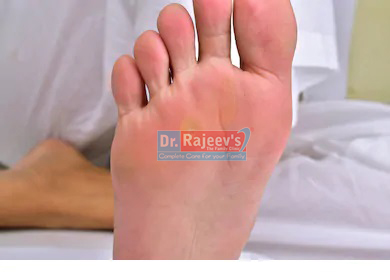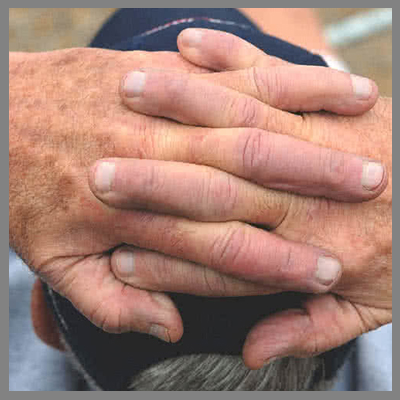

Hyperkeratosis refers to thickening of skin’s outer layer. This layer is made of a protein called keratin. Keratin can start to overgrow in many different conditions. Some types of hyperkeratosis are inherited conditions. They may be present at birth. Other kinds of hyperkeratosis may be early signs of skin cancer. They tend to develop later in life.
In some cases, hyperkeratosis is the skin’s response to rubbing or irritation. A corn or callus on hands or feet is a form of  hyperkeratosis. Keratin is a tough type of protein and is meant to help protect our skin. A bump or patch of thickened skin is known as a hyperkeratotic lesion.
hyperkeratosis. Keratin is a tough type of protein and is meant to help protect our skin. A bump or patch of thickened skin is known as a hyperkeratotic lesion.
Other types of hyperkeratosis include:
Chronic eczema: Eczema is a condition in which patches of dry, scaly skin develop. Often the cause is unknown. Eczema is believed to be the result of genetic or environmental causes.
Actinic keratosis: These are usually small, reddish, scaly bumps that emerge after exposure to too much ultraviolet light. Sun exposure is the most common culprit. Actinic keratosis means one have precancerous growths. A dermatologist should inspect them.
Seborrheic keratosis: These small brown or black patches usually appear on the face, neck, shoulders, and back. They’re noncancerous, but often look suspicious. This is one of the most common benign skin growths that develop on adults.
Epidermolytic hyperkeratosis: This condition can be seen at birth. Newborns have reddish skin and sometimes blisters too. There are two main types of this form of hyperkeratosis: PS-type epidermolytic hyperkeratosis features thickened skin patches on the hands and feet. If someone have NPS-type epidermolytic hyperkeratosis, their hands and feet may not be affected, but tough skin patches may develop elsewhere on their body.
Keratosis pilaris: Often described as “goose flesh,” keratosis pilaris is a harmless condition. It tends to develop on the upper arms, but may also appear on the legs and buttocks. Too much protein in the skin leads to tiny bumps on the skin that are more of a nuisance than a health concern.
Follicular hyperkeratosis: Also known as inverted follicular hyperkeratosis, this condition presents as a single bump, often on the face, of middle-aged or older adults. These growths are benign (noncancerous), but they often look like cancerous lesions.
Psoriasis: This inflammatory disease commonly causes hyperkeratotic, scaly silver plaques, or scales, on the skin.
Pressure-related hyperkeratosis occurs as a result of excessive pressure, inflammation or irritation to the skin.
When this happens, the skin responds by producing extra layers of keratin to protect the damaged areas of skin.
Non-pressure related keratosis occurs on skin that has not been irritated. Experts think that this form of hyperkeratosis may be the result of genetics.
Forms of hyperkeratosis include:
If a person has a potential area of hyperkeratosis on their skin that they are uncertain of, they should see their doctor.
Some symptoms of the more common causes of hyperkeratosis include:
With the exceptions of corns and calluses, most forms of hyperkeratosis are not painful.
AGARICUS MUSCARIUS
Very useful for keratosis pilaris with small hard eruptions. There is much burning, itching, and redness of the affected part.
ARSENIC ALB
Excellent for Keratosis pilaris with dry skin.Useful for dry, rough, scaly skin worse from cold and scratching. There is much burning and restlessness.
BOVISTA
Very useful for Keratosis pilaris with tottery eruptions, dry or moist. There is pimple like bumps on the body.Very useful for Urticaria like symptoms on excitement with rheumatic lameness , palpitation and diarrhea.
LITHIUM CARB
Very useful for Keratosis pilaris where there is dry harsh skin , with scabby , tottery eruptions on hands and cheeks preceded by red raw skin.
MERCURIUS
Very useful for Keratosis pilaris with moist skin. There is a general tendency to easy perspiration , but patient is not relieved from it.Useful for itching which get worse from warmth of bed.
RL 30